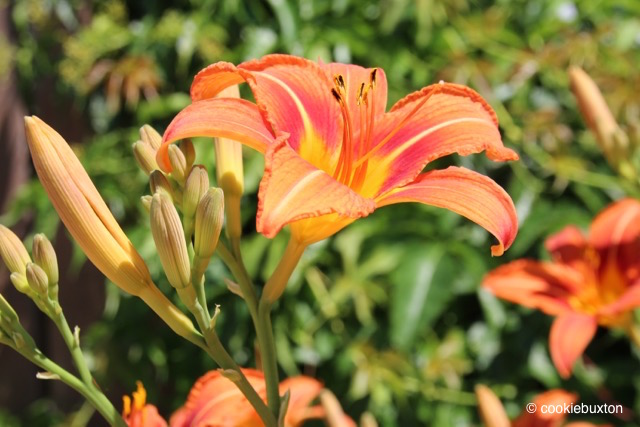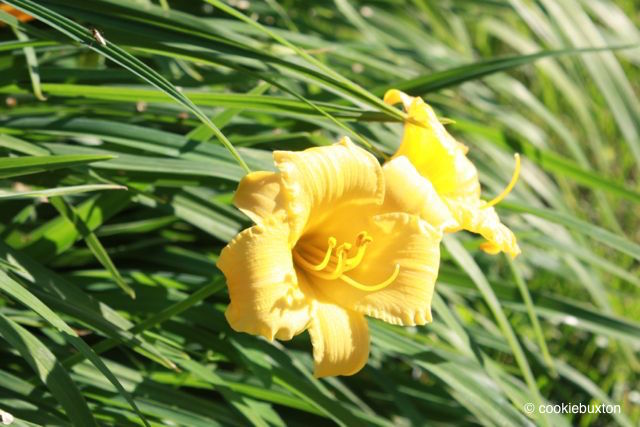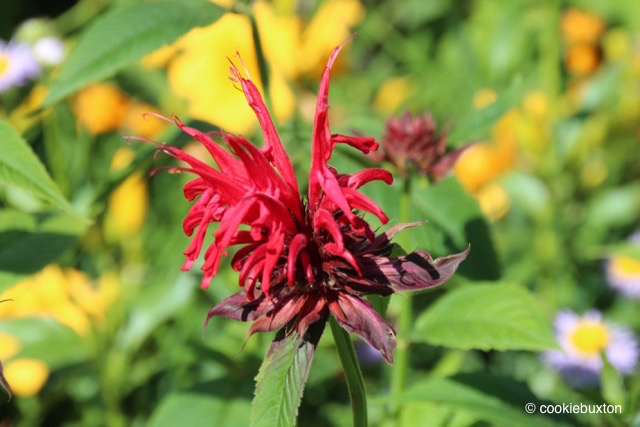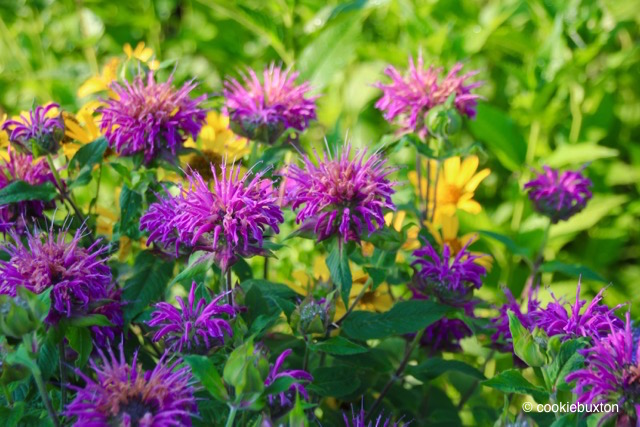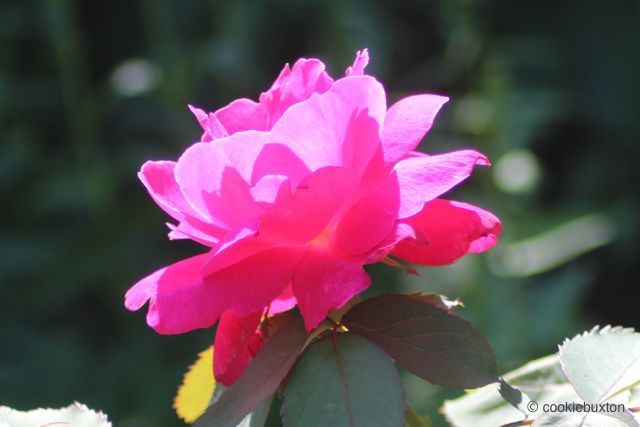Seven sun-loving perennials at home in northern prairie gardens
Sun-loving perennials are the all-stars in my home garden. Having the main part of my garden with a south-facing orientation, and as it is a northern Canadian garden, I rely on winter hardy, sun-loving perennials that do well in prairie soil.
Below are seven sun-loving perennials that I especially love. They winter well in cold-climate gardens and put on a great show for weeks at a time in the summer. My garden beds catch the morning, midday, and late afternoon direct and dappled sunlight in different parts of the yard. These are “tried and true” garden plants that do well in my small, Winnipeg city garden, and I enjoy them for their interesting features and beautiful flowers.
Daylily // Hemerocallis
Hemerocallis fulva ‘Tawny’
Hemerocallis ‘Stella D’oro’
Most Canadian gardeners will recognize the common orange daylily – called the Tawny Lily, or Hemerocallis fulva ‘Tawny’. ‘Tawny’ is an apt description of H. fulva’s colour. The flower colour has a slight rust-tone to it, with tones of light to dark orange. When massed together and growing in full sunlight, the flowers make a spectacular showing. My long bed of Tawnies, reaching about three-feet in height, stretch about 10 metres long and just over a metre wide along my backyard fence, creating a beautiful sight in the back lane where they look truly stunning by mid-summer. I like that they are neat and attractive for the remainder of the season after bloomng. I have never had any pest issues – no problems with tent caterpillars or other worms, they don’t appear to attract the red lily beetles, and they show no signs of decline. My daylilies were transplanted from a 50-year-old lily bed from my family home, and these plants have multiplied and have been thriving for over a decade in their present location.
I rarely water daylillies; they pull the moisture they need from the ground. The only attention they receive is that I remove the spent flowers when most of the blooms are done, hand-cutting the willowy stems to below the leaf level. Then, in fall, we shear the plant to ground level for the winter. The beds are unharmed by a bit of backlane automobile traffic in the winter. In spring, the bed reliably comes back to life for another season of beautiful blooms.
Also over a decade ago, I planted a bed of yellow daylilies, the award-winning Stella D’oro, in a half-circle around one of my shrubs. For the past few years, I have divided the clumps and replanted, gradually widening the arc. Stella’s gorgeous yellow blossoms appear throughout the summer, lasting well beyond the late June, early July flowering season here in Zone 3. Like the larger daylilies, Stella D’oro is completely pest and disease free, and provides weeks of gorgeous colour. You will see in a photo that the Monarda didyma ‘Jacob Cline’ is situated beside it, for an interesting contrast in texture and colour schemes.
Bee Balm // Monarda didyma
Monarda didyma ‘Jacob Cline’
Monarda didyma ‘Marshall’s Delight’
Monarda didyma ‘Blue Stocking’
Besides being a sought-after source of nectar for pollinators, bee balm is stunning when grown in large plantings and it adds a lovely punch of colour to the garden scheme wherever it is situated. Part of my attraction to these lovely flowers is that I find the appearance of the flower to be almost funny looking. The flower head, made of dozens of “rolled” petals, looks wild and a bit weird at times, like someone fresh out of bed. If ever a plant could be nominated as having the best morning bed head, it’s the Jacob Cline hybrid. In my garden, Jacob Cline reddish-maroon “locks,” flanked to the south by a bed of bright yellow lilies, makes me smile whenever I am looking at the flowers up close.
Bee Balm is easy to grow, easy to move, easy to share, loves the sun, and can handle a bit of shade. It survives easily in my zone 3 cold-climate garden, and it’s a plant I will always want to have around to brighten my summer garden.
Rose // Rosa
Rosa x ‘Winnipeg Parks’
Rosa x ‘Morden Blush’
One of Canada’s federal plant research stations was set up in Morden, Manitoba, in 1915. It was the breeding home for many years of the Morden series of Canadian hardy sub-zero shrub roses, cherished on the Canadian prairies for their beauty and durability. Two shrubs that have flourished for well over a dozen years in my yard, surviving year after year of harsh winter temperatures, are ‘Morden Blush’ and ‘Winnipeg Parks.’
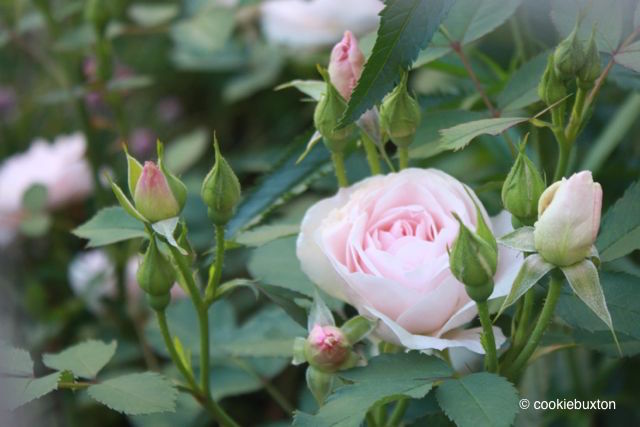 Morden Blush was issued in 1988. This pale and delicate looking rose is ivory-pink. With a bit of attention to dead-heading, the shrub produces its lovely blooms all summer long.
Morden Blush was issued in 1988. This pale and delicate looking rose is ivory-pink. With a bit of attention to dead-heading, the shrub produces its lovely blooms all summer long.
Winnipeg Parks, issued in 1993, is my favourite of the Morden shrub roses. Its gorgeous deep rose flower colour and handsome leaves are show-stoppers throughout the summer.
The flowers on both of these Morden shrub roses are truly beautiful. These small shrubs require very little care, beyond offering some light winter protection of mulch or leaves around the base of the plant, and a bit of pruning in fall and spring. Otherwise, the gardener can simply sit back and enjoy these long-blooming rose treasures.
Speedwell // Veronica
‘Sunny Border Blue’
‘Red Fox’
‘Sunny Border Blue” is a blue-flowering, tall, gorgeous, reliable bloomer and a garden staple. I adore this plant. It is loved as well by the local bees and butterflies. Introduced in 1946 by Sunny Border Nurseries, it was selected as the Perennial Plant Association’s Plant of the Year in 1993.
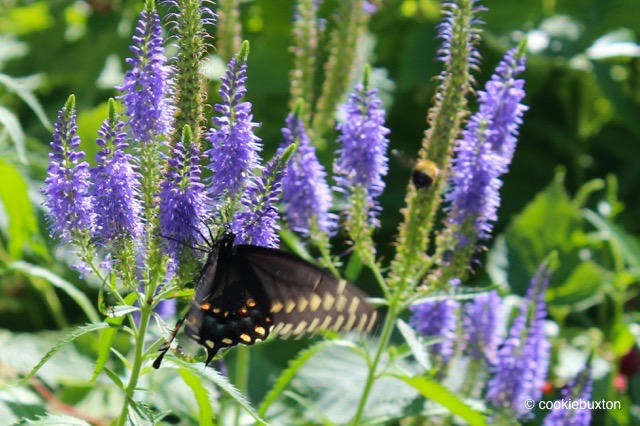 ‘Sunny Border Blue’ has been performing reliably in my backyard for over two decades, both in its original location and in the various spots where I have replanted it around the yard. V.longifolia is the long-long leaf species of Veronica, growing from 60 to 120 centimetres in height (two to four feet). The blue flower spikes of ‘Sunny Border Blue’, which I treasure all summer long, range in length from 15 to 20 centimetres (six to eight inches).
‘Sunny Border Blue’ has been performing reliably in my backyard for over two decades, both in its original location and in the various spots where I have replanted it around the yard. V.longifolia is the long-long leaf species of Veronica, growing from 60 to 120 centimetres in height (two to four feet). The blue flower spikes of ‘Sunny Border Blue’, which I treasure all summer long, range in length from 15 to 20 centimetres (six to eight inches).
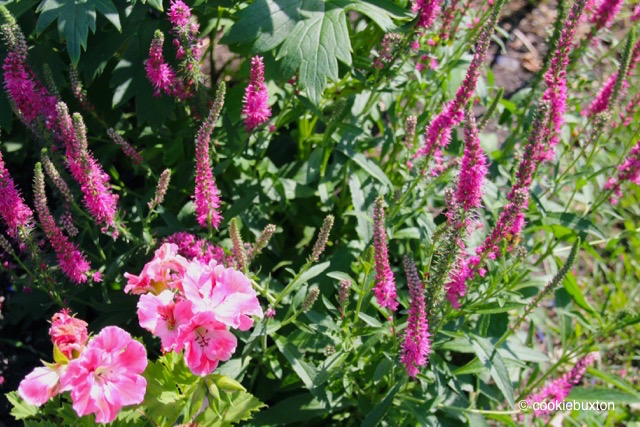 Spike speedwell is shorter in height than longifolia, and has slightly shorter leaves. The deep rose colour of ‘Red Fox” is very attractive. I grow ‘Red Fox’ in a small island garden near the bird feeder, alongside delphiniums, Oriental lilies, milkweed, and butterfly bush.
Spike speedwell is shorter in height than longifolia, and has slightly shorter leaves. The deep rose colour of ‘Red Fox” is very attractive. I grow ‘Red Fox’ in a small island garden near the bird feeder, alongside delphiniums, Oriental lilies, milkweed, and butterfly bush.
Delphinium // Delphinium
Tall and gorgeous, delphiniums in bloom show off their beauty in early- to mid-summer in cold-climate gardens. Reaching heights of one to two metres (roughly between three feet to six or seven feet for some types), the tall flower stalks carry an abundance of lovely florets. The colours of the florets can be in deep or pastel shades or combined shades of purple, blue, lavender and mauve, pink, and white.
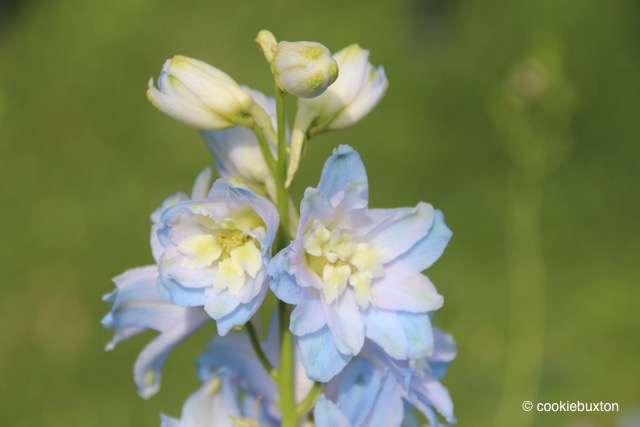 The “bee” of the flower, which is its distinctive centre or eye of the flower, can be light or dark, adding further interest and attracting pollinators to this stately plant.
The “bee” of the flower, which is its distinctive centre or eye of the flower, can be light or dark, adding further interest and attracting pollinators to this stately plant.
Plant breeders have come up with charming names for these plants. My collection of hybrids from the D. elatum species has included the cultivar series Magic Fountains, New Millennium, and Aurora. Over the years I have enjoyed such hybrids as ‘Royal Aspirations,’ ‘Summer Skies,’ ‘Guinevere,’ ‘Astolat,’ ‘Blue Bird,’ ‘King Arthur,’ ‘Galahad,’ and ‘Blue Lace.’
If you can make room at the back of your border or in the middle of an island bed for a grouping of delphiniums, you will find yourself falling in love with this flower. Although they are quite sturdy, staking is often helpful to support the heavy flower stalks. With some attention to deadheading, you can enjoy some re-blooming in the fall. With a little bit of care, you will be rewarded with weeks of beauty each summer as you create a touch of Camelot right in your own back yard.
Coneflowers // Echinacea & Ratibida
Purple Coneflower (Echinacea purpurea ‘Magnus’)
Upright Yellow Coneflower (Ratibida columnifera) – native in southern Canada
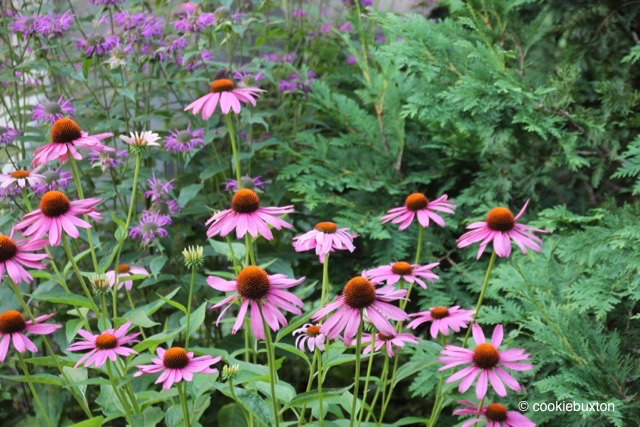 When I saw my first Purple Coneflower, many years ago, I thought it was a strange and unattractive looking flower. Now, having fallen in love with these plants, I can’t imagine a garden without them. I especially love the way wildlife is attracted to these flowers. Birds, bees, butterflies, and a variety of small flying insects all visit these plants and find something to sustain them. These gorgeous flowers appear year after year, returning at nearly the same location, and also self-seeding and moving around within the garden, brightening whatever space they have volunteered to occupy that season.
When I saw my first Purple Coneflower, many years ago, I thought it was a strange and unattractive looking flower. Now, having fallen in love with these plants, I can’t imagine a garden without them. I especially love the way wildlife is attracted to these flowers. Birds, bees, butterflies, and a variety of small flying insects all visit these plants and find something to sustain them. These gorgeous flowers appear year after year, returning at nearly the same location, and also self-seeding and moving around within the garden, brightening whatever space they have volunteered to occupy that season.
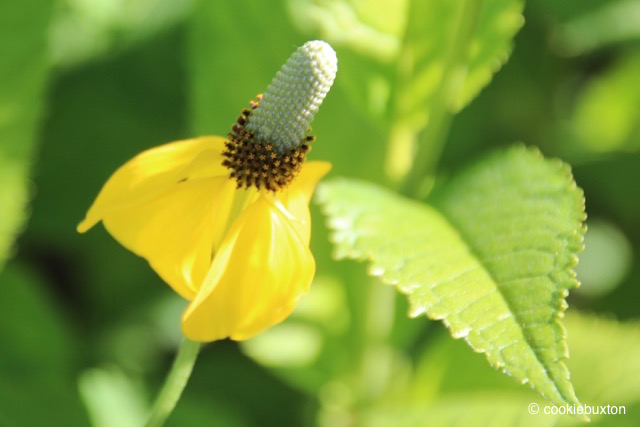 The slender, Upright Yellow Coneflower, Ratibida columnifera (syn. R. columnaris), is a prairie wildflower common on North America’s Great Plains region. Its common name locally is Mexican Hat.
The slender, Upright Yellow Coneflower, Ratibida columnifera (syn. R. columnaris), is a prairie wildflower common on North America’s Great Plains region. Its common name locally is Mexican Hat.
Yellow coneflower is a newer addition to my garden, planted three seasons ago, but it has established itself nicely and adds interest and draws pollinators to the garden in mid- to late- summer.
Coneflowers like the full sun, and do well in hot, dry locations.
Joe Pye Weed // Eupatorium
Eupatorium maculatum ‘atropurpureum’
Joe Pye Weed, or simply Joe Pye, is also called Queen of the Meadow, Gravel Root, and Trumpet Weed. Joe Pye Weed is a tall, native North American wildflower that likes sunshine and moist soil, into which it sets down deep roots. While there are “Little Joes” to be found in the nurseries, it is the six-foot-plus native species that I find to be the real crowd pleasers.
Friends of ours have had a beautiful, large bed of Joe Pye Weed, Eupatorium maculatum ‘atropurpureum’, for many years. I added this variety in my yard a few years back, planting it into my rectangular bed at the back of my yard. Winnipeg’s Assiniboine Park English Gardens, open for public viewing, feature a large bed of Joe Pye Weed in the garden plan, so if you are visiting the Park, you can see this attractive, tall plant in a mass planting in a natural-looking setting. Joe Pye is also a feature plant in Winnipeg’s Kildonan Park formal gardens located on the north side of the drive as one enters the park from the west side. These handsome plants grow steadily through June and by mid- to late-July begin to display their blooms.
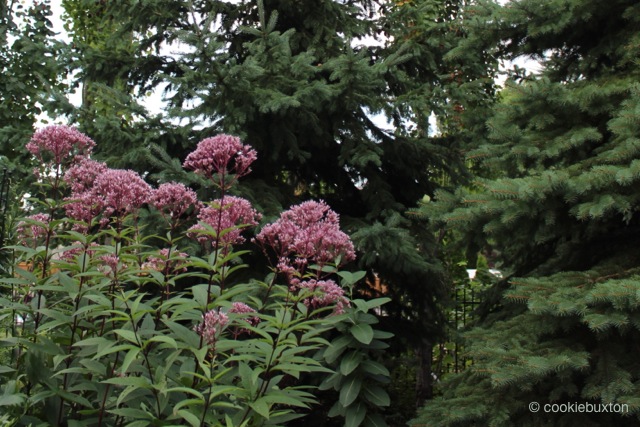 A distinctive and attractive addition to the sunny perennial garden, the plant is an important food source for butterflies, bees, and other nectar-seeking insects. The plant’s light, lavender-mauve flowers look somewhat messy when seen up close after they open; they look lovely and impressive from a distance, especially in a mature planting with several plants growing together.
A distinctive and attractive addition to the sunny perennial garden, the plant is an important food source for butterflies, bees, and other nectar-seeking insects. The plant’s light, lavender-mauve flowers look somewhat messy when seen up close after they open; they look lovely and impressive from a distance, especially in a mature planting with several plants growing together.
